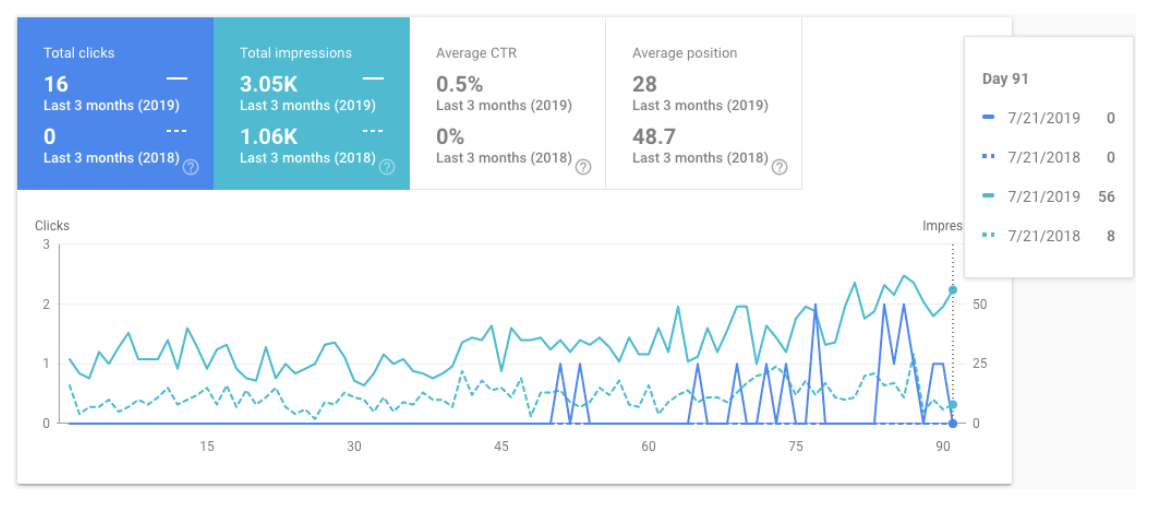
In this era of digital media consumption, chances are high that before a traveler even sets foot in a new destination, they will have visualized and researched every square inch of it.They will have already taken the trip in his or her mind’s eye before their plane even leaves the tarmac.This is the methodology of the modern traveler.
Meet the Modern Traveler
In a study of a real traveler’s decision-making journey, Google found that their traveler, called “Gina,” covered 850 digital touchpoints over her three-month planning process. These touchpoints were the fruit of 166 searches. Not to mention the countless other interactions she likely had through the retargeting efforts of brands she engaged with along the way.Of all those touchpoints, though, only 4% of the sites she visited were related to accommodations. 48% of the sites she visited focused on maps, events and activities, and restaurants. Each of these subject areas represents an opportunity for a hospitality brand to create a meet-cute between itself and Gina—assuming that the brand has the right talking points.But how do you identify and organize those talking points?Content marketers subscribe to the ideology that you shouldn’t “build a house on rented land,” meaning that a hotel’s best digital real estate is the one where they’re the sole proprietor: their website. With the website as the property, content marketers can start constructing digital cities by means of an interconnected network of pages. Enter the content hub.
Content Hub: Content Meets Intent
A content hub is a hotel’s opportunity to carve out their own corner of the internet. This little digital corner can surround a subject that’s inherently relevant to both the hotel and that hotel’s ideal traveler. If Google’s study is any indication, these subjects should speak to the 48% of content types a traveler will interact with that emphasize things to see, do, and eat.The modern traveler’s initial motivation in trip planning is to learn. Like Gina, they want to gather as much information as possible from sites that really know what they’re talking about. As the boots on the ground in a given destination, hotels are in a unique position to be that fountain of knowledge.All they have to do is match their distinctive know-how with one of Gina’s queries, then back it up with the architecture designated by the content hub.
But Does it Work?
Content marketing is the marketing buzzword of the moment, and content hubs are the shiny object that goes along with it. That’s because content marketing transforms every brand into a publisher, no matter the size of their site or their writing team. But do content hubs actually succeed in reaching new travelers?Here at Screen Pilot, we partnered with a resort in Scottsdale to implement a content hub.This hub would be stocked with all the information our traveler would need before booking a getaway to Scottsdale, Arizona. In January 2019, we redesigned their existing Things to Do page from a static list of attractions to the nerve center for all things Scottsdale travel.Their new hub for Scottsdale things to do featured an interactive map with area attractions, links to relevant content pieces, as well as category pages that dive deeper into important seasons or events. Each piece of content lifted up the others as well as the hub itself, broadening the hotel’s digital footprint surrounding “things to do in Scottsdale”-esque queries.
The Results
Because this content hub was remodeled from an existing page, we were able to compare the performance of the content hub against the performance of that same section of pages during the same period of last year. For this analysis, we grouped pages whose URL contained “things-to-do” and assessed between January 20 and June 30, 2019, against that same date range in 2018.For this content hub, our primary goal was to reach new users. Though a content hub could be optimized with bookings in mind, our primary KPI’s in this project were page views, unique page views, new users, and time on site. Any revenue-related successes are added wins.
Results by KPI
Through the content hub, we:
- increased new users 374% year over year, from 249 new users in 2018 to 1,181 new users in 2019
- increased page views, up 177% from 6,488 to 17,963
- increased unique page views, up by 179% from 5,476 to 15,233
Though the uptick in new users and pageviews is staggering, the subsequent growth in time on page suggests that this new traffic was also of a higher quality.In 2018, users spent an average of only 1:03 on the “things-to-do” pages. In 2019, that time increased by 19 seconds to an average of 1:22.Beyond time on site, the content hub also improved bookings-related actions that can be attributed to URL’s containing things-to-do. In 2019, the average look-to-book conversion rate for the site section was 5.04% across 100 look-to-book conversions. During this same period in 2018, the conversion rate only reached 2.34% for 13 total look-to-books.
Results by SERPs
The sweeping increases in our target KPI’s were mirrored in the content hub’s presence in the search engine results pages. We compared the target keyword for the main page, “things to do in Scottsdale” in the same periods in 2019 and 2018 using Google Search Console. The site’s average position for that query has increased by 20 places.

- Overall SERP impressions improved along with it, by 187% from 1.06k to 3.05k
- CTR grew from 0% to 0.5%, which garnered 16 organic clicks where there were none in the previous year
Takeaways
Google’s exploration into the travel research process revealed that users cross 850 touchpoints over the three months it takes them to actually book a trip. Thanks to that study, we also know that 48% of those touchpoints relate to things to do, see, or eat in their desired destination. To win those travelers, hotels should step up to the plate by providing information about these topics.Our successes with our target KPI’s, our broadened presence in the SERPs, and our improved look-to-book conversion rates suggest that, when it comes to content hubs, if you build it they really will come. Relevant, quality content brings more users to your hotel’s site. And those users are likely to spend more time on your site and take more actions that lead to a booking, like checking your rates.In the same study, Google reported survey results that the best way to win the booking once you’ve earned their attention is to be in the right place at the right time. Travelers said that they discover new brands during their search process. More importantly, though, travelers also said that most of the time those are the brands they’ll ultimately book with.Don’t you want yours to be one of them?
Did you enjoy the read?
Get original hospitality industry insights delivered to your inbox. Sign up to receive Screen Pilot’s #TrendingNow Newsletter.






